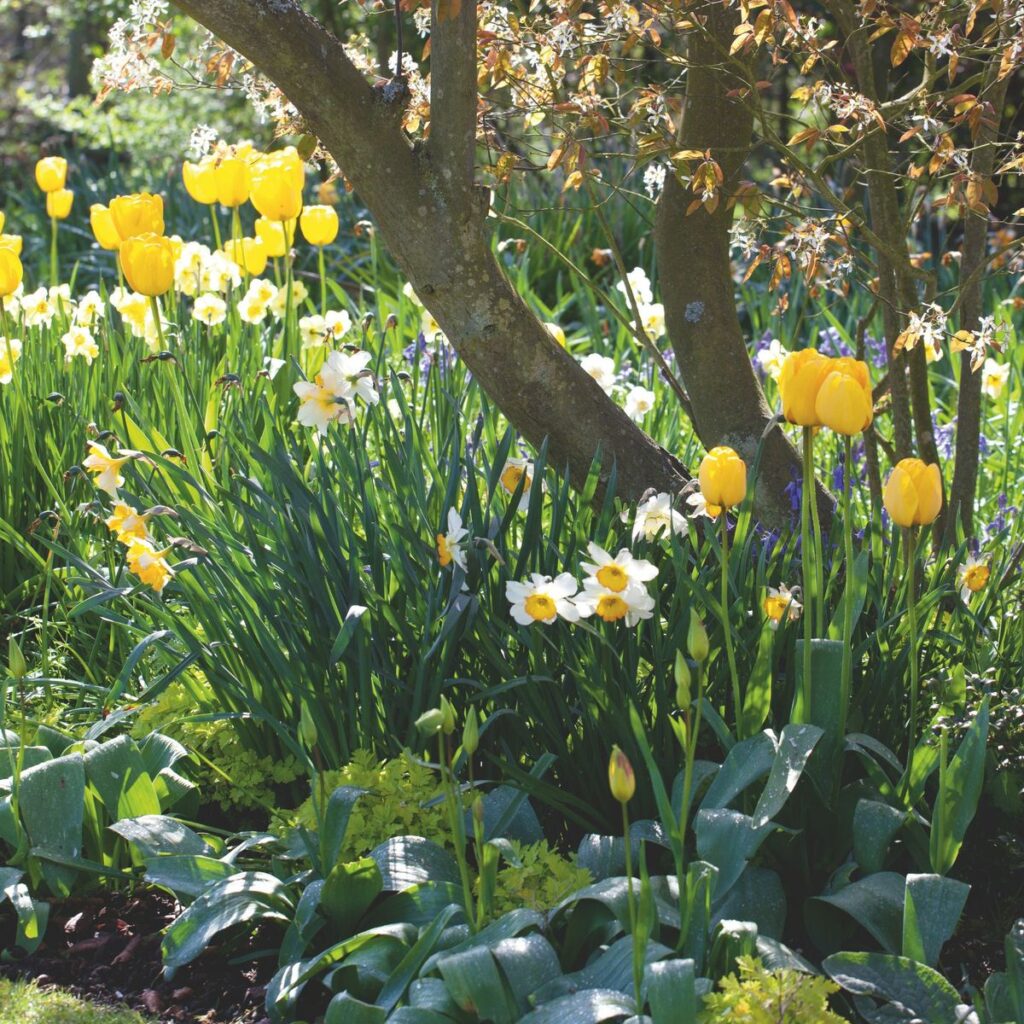Celebrity garden David Domoney shared a really simple bulb-planting technique on ITV’s This Morning, and it’s safe to say we’ll be trying it this season. What’s more? David says the method will guarantee that every one of our bulbs will flower next spring.
If you’ve been wondering when to plant bulbs for spring, now is the perfect time to be thinking about getting them in the ground (or pots). Knowing how to plant bulbs can be tricky for first-timers, though, and even seasoned gardeners might be looking for tips to help their bulbs flourish next year.
So, what does David say? Let’s take a look at his ‘lightbulb’ bulb-planting technique…
David Domoney’s top tip for planting bulbs
While the drizzly weather might not necessarily inspire you to get out and flourish your garden ideas, there’s actually no better time than now to ensure you’ve got all your (gardening) ducks in a row.
In a segment of ITV’s This Morning, presenter and English Chartered Horticulturist David Domoney revealed the top tasks to tick off in the garden this winter, confirming that right now is the perfect time to get your bulb lasagnes prepped.
However, it’s what he said afterwards that was pure gold.
‘One big tip about planting bulbs is there is a similarity between a lightbulb and a flower bulb,’ he starts. ‘The secret is, when you’re digging holes to plant bulbs, you dig them and plant them two and a half times the height of the bulb.
‘But as you push the bulb into the ground, if the bottom of the bulb doesn’t hit the bottom of the soil, water gets in and can rot the bulb.’ That’s why it’s important to know how deep to plant allium bulbs, for example.
Now comes the genius analogy.
David continues, ‘With a lightbulb, when you put it in, you always push and twist – and you should do the same with your flower bulbs. Push and twist each one in, so the bottom of the bulb hits the bottom of the soil, and each and every one of them will flower.’
David assures us that this will work with any flower bulb, irrespective of whether you’re decking out your entire garden border or are simply sticking to a smaller container garden – so go crazy. He’s got us wanting to try this ingenious ‘push and twist’ method for ourselves now.
We asked gardening experts for their take on the lightbulb planting technique, and they shared a couple of additional tips for bulb-planting success.
‘Bulbs can be prone to rotting in compost, so as well as using the lightbulb technique you should ensure that your soil is well-draining,’ says Graham Smith MCIHort, gardening expert at LBS Horticulture. ‘Prior to planting bulbs, you can improve the drainage of the soil by adding materials such as garden compost, or adding horticultural grit or sand to the base of the dug hole before planting.
‘It is also not recommended to push bulbs down hard into the soil, as this can damage them. Instead, cover bulbs gently with soil and firm this down carefully.’
Garden designer Harriet Worsley also agrees with David Domoney’s advice, but warns us to use the technique with caution. ‘It is definitely correct that there shouldn’t be a gap between the base of the bulb and the soil, as you don’t want the water getting in and rotting the bulbs,’ she says. ‘he base of the bulb should touch the soil.
‘However, you don’t want to twist it too much which would then damage the bulb.’
Bulb planting essentials
If you want to try out the lightbulb analogy for yourself, here’s what you’ll need:
FAQs
Do all bulbs need to be soaked before planting?
It’s a debate which divides gardeners, but should spring bulbs be soaked before planting?
Well, it depends on the kind of bulb you have. Harder bulbs like anemones can benefit from the plumping effects of soaking before planting, but others, like daffodils and tulips, usually don’t need it.
What is the best month to plant bulbs?
It all comes down to the type of bulb you have and which season it flowers. The best autumn-flowering bulbs will need to be planted in late summer, for example, while spring bulbs are usually planted during the autumn months.
Who would’ve known that even the most opposite kinds of bulbs would share similarities, eh?
Read the full article here

